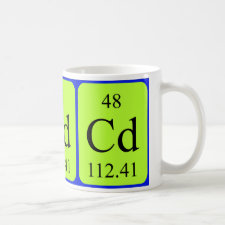
Authors: Zhu F, Li LW, Xing JD
Article Title: Selective adsorption behavior of Cd(II) ion imprinted polymers synthesized by microwave-assisted inverse emulsion polymerization: Adsorption performance and mechanism.
Publication date: 2017
Journal: Journal of Hazardous Materials
Volume: 321
Page numbers: 103-110.
DOI: 10.1016/j.jhazmat.2016.09.012
Alternative URL: http://www.sciencedirect.com/science/article/pii/S0304389416308159
Abstract: Microwave-assisted inverse emulsion polymerization method was used to prepare Cd(II) imprinted polymer (IIP) by using β-cyclodextrin (β-CD) and acrylamide (AM) as functional monomer, epichlorohydrin (ECH) as crossing-linking agent, ammonium persulfate as initiator. The Cd(II) imprinted polymer was characterized by SEM, FTIR and TGA. The influences of initial concentration of Cd(II), pH values, temperature, time and competitive ions on adsorption capacity and recognition properties are investigated. Under the optimal conditions, the adsorption capacity could reach 107 mg/g. Furthermore, pseudo first order kinetic model, pseudo second order kinetic model and intra-particular diffusion model were used to describe the adsorption kinetic behavior. Results showed that the pseudo-second-order model (R2 0.9928-0.9961) had the best agreement with the experimental data. Langmuir adsorption isotherm model described the experimental data well, which indicated that adsorption was mainly monolayer absorption. Moreover, the study of adsorption thermodynamics (Δ G0 < 0, Δ H0 > 0, Δ S0 > 0) suggested that the adsorption process was a spontaneous and endothermic process. Competitive selectivity experiment revealed that imprinted polymer could selectively recognize Cd(II). It provides a new idea for removing Cd(II) from aqueous solution
Template and target information: cadmium ions, Cd(II)
Author keywords: Cd(II) ion imprinted polymers, Microwave-assisted, Inverse emulsion, Kinetic, thermodynamics



Join the Society for Molecular Imprinting

New items RSS feed
Sign-up for e-mail updates:
Choose between receiving an occasional newsletter or more frequent e-mail alerts.
Click here to go to the sign-up page.
Is your name elemental or peptidic? Enter your name and find out by clicking either of the buttons below!
Other products you may like:
 MIPdatabase
MIPdatabase









